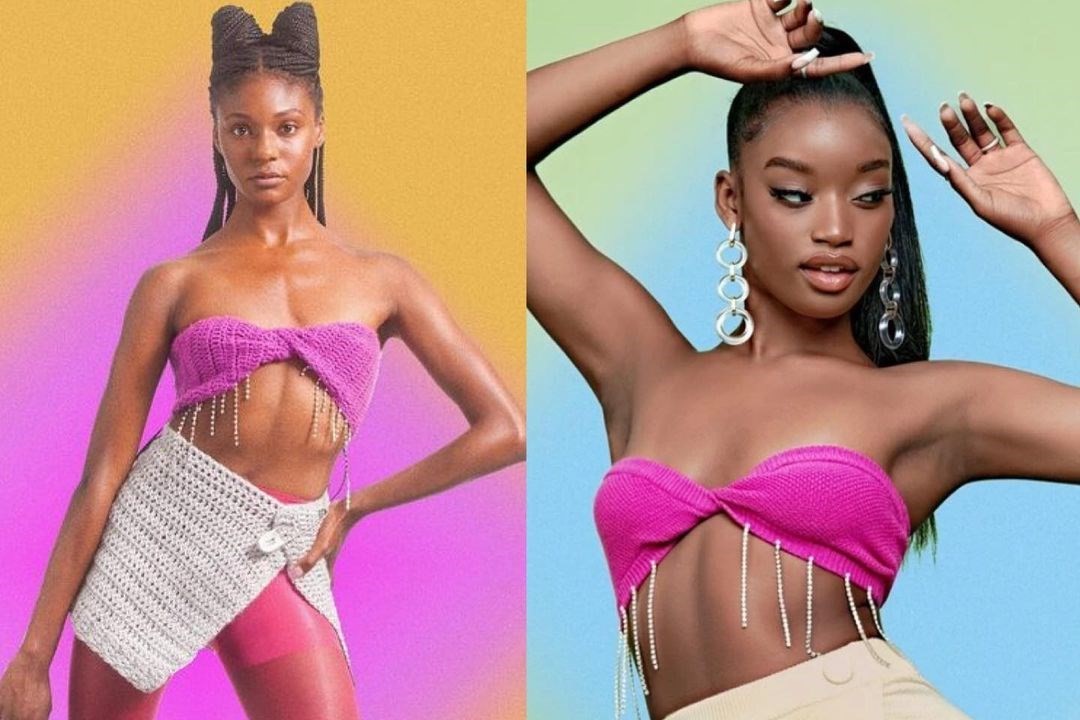
H&M Takes a Step Toward Circularity With a Collection of Garments Made From Waste
According to the New Standard Institute, fashion is responsible for between 4 and 10% of global carbon emissions, with 150 billion new garments made each year. That’s roughly 19 new pieces of clothing for every living person. There isn’t a brand (or consumer) who isn’t implicit in the problem, from luxury houses to high-street giants like H&M. And it isn’t just that the industry is making too many clothes; consumers are also disposing of them too quickly, often after just a few wears. One big step toward meaningfully reducing fashion’s footprint will be reeducating the consumer about buying fewer clothes, wearing them more, not throwing them out, and understanding what should happen to them when they’re really at the end of their life.
H&M proposed one solution last month: Looop, a machine in its Stockholm store that shreds old garments into new ones over the course of five hours. “The purpose of it is to engage our customers and help them understand their old garments have value,” explains Pascal Brun, H&M’s head of sustainability. “It’s also about making sure they experience the process of recycling, so it triggers behavioral change.” Looop is still in its early stages, so its capabilities are limited; it likely can’t recycle blended materials, which are difficult to separate, and zippers or hardware might pose a challenge. But Brun says they’re improving it day by day, so Looop will eventually be able to recycle many types of fibers and garments.
Today, H&M is taking another step toward becoming “fully circular” with its new Conscious Collection, which was made almost entirely of materials upcycled from waste. Brun pointed out that this will be the world launch for a few new fabrics, like AgraLoop, a natural fiber made from converted food crop waste (the company was the winner of H&M’s 2018 Global Change Awards). There’s also Vegea, a leather-like material made from byproducts of the winemaking process. This isn’t the first time H&M is making Vegea handbags, but creative advisor Ann-Sofie Johansson said its quality has gotten “better and better” over the past couple of years. Brun also called out We Are SpinDye, a dyeing process that uses 90% fewer chemicals and 75% less water, and perhaps the collection’s most high-tech material: Made of Air, a plastic made from carbon emissions sequestered from the air and used for sunglasses. “It’s like mining the sky,” Brun adds.
“We’ve worked with materials made from waste before, but we wanted to focus on it more this season,” Johansson explains, adding that the design team was inspired by the 2019 Venice Biennale, titled May You Live in Interesting Times. “We need to see waste as a resource. It can become something beautiful, and it has value.”
The new Conscious Collection isn’t the only effort H&M is making in sustainability and circularity. Johansson explained that her team has started sketching in 3D, which gives them a better sense of how a garment will look and allows them to create samples only for the garments they plan to produce. “We’re looking at how we can use data to be more spot-on, and [cut] unnecessary garments,” she adds. “And we aren’t there yet, but I think the idea of producing on-demand is super-interesting.”
“One thing the pandemic has really taught us is that managing your stock is key,” Brun says. “I think on-demand production is where we’re going to see scale, because we can be closer to the demand.” In theory, on-demand production would make it possible to design and produce garments just before a consumer would buy them—as opposed to months in advance—so there’s a better understanding of what they’re actually in the mood for. “That would also help us be closer to the quantification [or number of garments], so we only produce what we sell,” he continues. “There is no business case for over-producing. It’s really about making sure we have an optimized production process, a flexible supply chain, and can use AI and data to quantify better.”
Of course, none of that matters if the clothes being created on-demand aren’t thoughtful and sustainable. “Everything we produce will need to be from a circular system,” Brun says. “Circularity is key for us, and it’s key for the industry going forward. I don’t see the industry being relevant and successful if it doesn’t become circular—the design of the product, the choice of the materials, the production processes, the customer use. How do we help our customer extend the life of their garments?”
Looop and waste-led design are small steps for now, but Brun and Johansson pointed out that a key role H&M plays with its Conscious Collections is helping companies like AgraLoop and Made of Air scale, so they can eventually work with other brands. Those are exciting developments, but how we talk about them and market them is equally important. As New Standard Institute points out, some brands are already misusing the term circular in an effort to get customers to actually buy more. Real circularity will hinge on working together to transform our collective mindset so we can buy less, buy better, and understand the value in our clothes.



